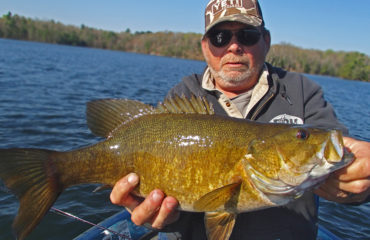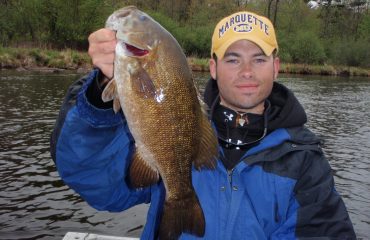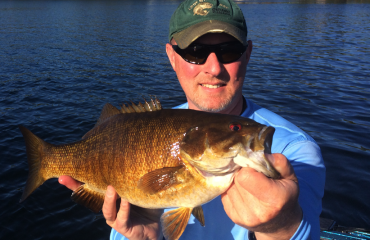Selecting for Specimens
The first assignment for this challenge is identifying the true trophy bass lakes that have viable populations of smallmouths weighing 5 lbs. or more. Many inland northern waters throughout Minnesota, Wisconsin, and Michigan that are managed for trophy fisheries, and have special management regulations, qualify in this respect.
State DNR’s can provide lists and lake survey records of the best trophy bass lakes in their states. Wisconsin and Michigan do a good job of this, publishing their data online. However, anglers need to do further homework and process this information carefully. Be mindful that if the lake has fishable populations of trophy bass, many large individual fish will be recorded in surveys. This data provides insights into the lake’s population estimates.
Wisconsin Fisheries Survey Reports

Every lake with public access is managed for different purposes and fishery goals. Trophy smallmouth fisheries are specifically managed under special regulations for big fish and to purposely maintain the lower population densities that are necessary in supporting them. On these types of lakes on my home waters of Wisconsin, average fish captured are 18 inches and better, but catch rates are far fewer in number. Bass are not the dominant and most abundant gamefish in the lake, and their special regulations only exist for maintaining their low number, controlling aquatic invasive species such as rusty crayfish and rainbow smelt, and helping better maintain walleyes. As a result of their management, special regulations fisheries seldom produce numbers, but highest odds for monsters.
Trophy hunters should plan to fish lakes that have a history of producing big fish. Surveys within the 2 above links can help reveal their identities, and easier yet the carelessness by word-of-mouth from other anglers and social media.
An interesting characteristic of trophy bass lakes is that historically every water body has areas that consistently produce big fish. This is true across several destinations. Before investing the time and effort for a big smallmouth, be aware that big fish spots exist. Their locations will be quietly revealed the more you trophy hunt.
Trophy hunting requires thoroughly and repetitively fishing specific spots and general lake regions.
Out on your own, you might not be able to quickly identify big fish spots. Fishing strategies and lure selection might not be compatible for the lake choice either. Additionally, you might also struggle locating pelagic baitfish and understanding the specific lake’s smallmouth feeding tendencies and habits.
There is no one size fits all pattern and strategy. Every specific fishery could require a unique bag of tricks. Having identified trophy capable waters, understanding them, knowing the preferences and behavior of its big bass, and identifying these trophy fisheries will lead to highest probability of catching one.
Before looking for a free handout here or elsewhere on the internet, begin all of your research at the two above links that are posted. Then follow-up with visiting those fisheries. Thanks to this published data, you’ll be well on your way to selecting for specimens this summer season.



















